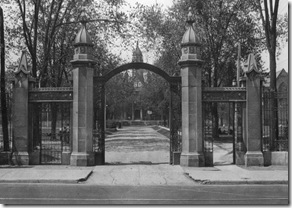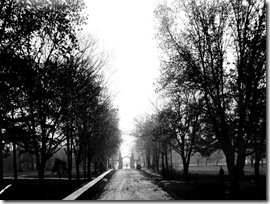Trinity Bellwood Park is one of the city’s true treasures, worthy of exploring at any time of the year, but in early spring it is perhaps at its best. When winter’s long dormancy gives way to the greenery of the new season, daffodils and early-tulips blossom in the flower beds and on the hillsides of the park. Though the park is in the heart of the city, the CN Tower is visible from most places within this vast expanse of parkland.
Trinity Bellwood Park is contained within park lot #22, one of the original land grants that were known as “park lots” because of their size and the fact that they remained forested. These large parcels of lands were located on the north side of today’s Queen Street. It was the fourth lot to the west of Bathurst Street. The first park lots were granted to the wealthy influential friends of Governor Simcoe, as he hoped to establish a class of gentlemen in pioneer Upper Canada that would be similar to the nobility in Britain. Today, many people consider this arbitrary and high-landed act of giving away government lands for free to wealthy individuals to be highly questionable. The recipients of the free land soon considered themselves the rightful rulers of the colony and formed a social clique. They became known as the Family Compact, and it was their dominance of the government that sparked the Rebellion of 1837.
In 1806, Governor Francis Gore granted park lot #22 to Captain Samuel Smith of the Queen’s Rangers. Samuel Smith never built a house on the land, but he named the estate “Gore Vale,” in honour his benefactor. Samuel Smith added the word “Vale” to his estate’s name as in those years, Garrison Creek flowed through the park lot. The stream had cut a wide “valley” (vale) through the property during the many years it had flowed southward toward the lake. The stream entered lake Ontario on the east side of Fort York, hence the name Garrison Creek. Today, the stream is contained within a sewer pipe. Part of the “vale” remains visible today in Trinity Bellwood Park, but much of it has disappeared due to landfill. Today’s “dog-walk” in the park is located in vale.
Samuel Smith sold the Gore Vale Estate to Charles Shaw, who in turn sold it to Duncan Smith in 1819. Duncan Cameron, a Scotsman, had arrived in the town of York (Toronto) in 1801, and became an active ember of the York Militia. In the War of 1812, he had commanded the York Volunteers at the Battle of Queenston Heights. In 1817 he became the Registrar of the Province and the same year, he built an impressive home on the Gore Vale property and appropriately named it “Gore Vale.” The house was located close to the lot line on the north side of Queen Street. Constructed of red bricks, it consisted of three storeys, the third storey having a Mansard roof, considered unusual in that decade. It was not until the 1870s that Mansard roofs became popular in Toronto. Houses with these roofs became known as “Second Empire Homes,” many of them still remaining in the city today. From the three dormer windows in the Mansard roof of Duncan Cameron’s house,” Lake Ontario was clearly visible to the south. In 1838, Duncan Cameron died, willing the ownership of the house to his sister, Janet Duncan, who had never married.
In 1851, as result of Bishop Strachan petitioning the British Government in London, a royal charter was granted to establish a college to reflect Anglican traditions. Bishop Strachan raised the funds to purchase twenty acres from Janet Duncan. Anglican clergymen from throughout Upper Canada soon gathered to raise funds for the building to house the new college. They decided that the first stage of the building program should not exceed $32,000 in cost. A contest was held to select an architect and the committee selected Kivas Tully. He designed the building in the Tudor Gothic style, reminiscent of the college buildings of Cambridge and Oxford. Messrs. Metcalfe, Wilson and Forbes received the construction contract, their tendered bid totalling the sum of $31,380.
Trinity College on the grounds north of Queen Street.
Janet Cameron died in 1853, and the house was purchased by Henry John Boulton, the younger brother of D’Arcy Boulton who owned the Grange. He gave the house known as Gore Vale to his daughter Sophia as a wedding. She died in 1867, but the house remained in the Boulton family for another three years. It was then bought by Edward Oscar Bickford, a railroad magnate.
In 1876, more buildings were added to the Trinity College complex, the selected architect being Frank Darling. The same year, Gore Vale Avenue was opened, the street that is today on the east side of Trinity Bellwood Park.
In 1904, Trinity College joined with the University of Toronto, and that same year they purchased the remaining property of the Gore Vale Estate. During the ensuing years, the Cameron house was employed as a hospital and also as a student residence. Trinity College remained at its site on Queen Street until 1925, when it relocated to the University of Toronto campus on Hoskin Avenue. Sadly, the buildings in Trinity Bellwood Park were demolished, as well as the house known as Gore Vale.
The Gates of Trinity College c. 1910 Gazing north on Strachan Avenue toward the gates
Photos from City of Toronto Archives
I have spent much of my adult life researching the history of Toronto. I love the city. It has provided the background for books, one of which, “The Villages Within”, was short-listed for the Toronto Heritage Awards. If interested in novels with a Toronto setting, descriptions of the books are available by following the link: https://tayloronhistory.com/2012/03/22/toronto-author-publishes-seventh-novel/
They can be purchased in soft cover or electronic editions. All books are available at Chapters/Indigo and on Amazon.com. The electronic editions are less that $4. Follow the links:
There Never Was a Better Time: http://bookstore.iuniverse.com/Products/SKU-000056586/THERE-NEVER-WAS-A-BETTER-TIME.aspx
Arse Over Teakettle: http://bookstore.iuniverse.com/Products/SKU-000132634/Arse-Over-Teakettle.aspx
The Reluctant Virgin; http://bookstore.iuniverse.com/Products/SKU-000188306/The-Reluctant-Virgin.aspx
The Villages Within: http://bookstore.iuniverse.com/Products/SKU-000175211/The-Villages-Within.aspx
Author’s Home Page: https://tayloronhistory.com/
Authors can be contacted at: [email protected]
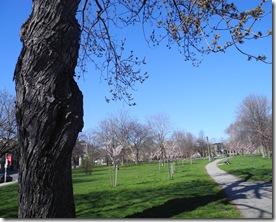
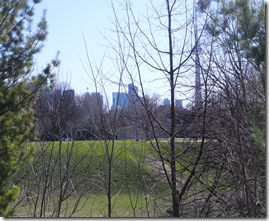
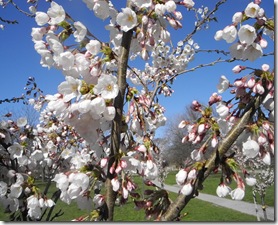
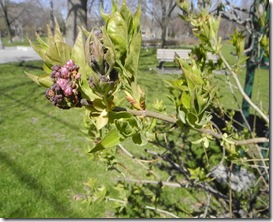
![f1498_it0011[1] f1498_it0011[1]](https://tayloronhistory.com/wp-content/uploads/2012/04/f1498_it00111_thumb.jpg)
